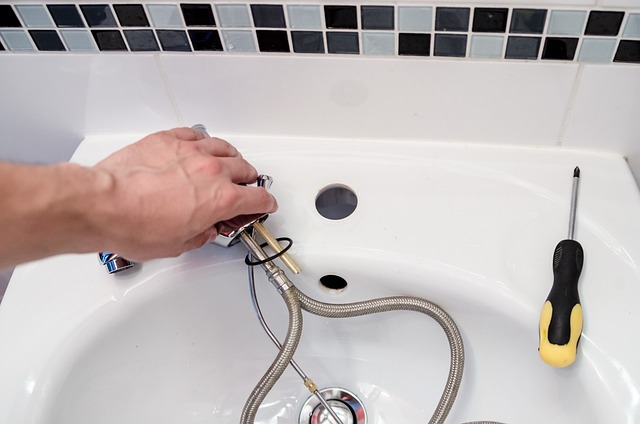When upgrading piping systems, plumbers increasingly favor PEX (cross-linked polyethylen) over copper due to its superior flexibility, freeze resistance, corrosion prevention, and reduced leak risk. While copper offers exceptional strength and high-temperature resistance, its rigidness hampers installation in tight spaces. PEX's ease of installation, adaptability, and reliable performance make it a preferred choice for plumbers and homeowners alike, despite a potentially shorter lifespan due to UV degradation.
Considering an upgrade to your home’s piping system? Plumbers often recommend PEX (cross-linked polyethylene) or copper as durable alternatives to traditional materials. This article delves into the durability benefits of these modern piping systems, comparing PEX and copper in terms of strength, corrosion resistance, and environmental impact. We’ll explore why upgrading to PEX or copper can offer enhanced water pressure, reduced leak risks, cost savings for homeowners, and seamless installation.
Durability Considerations: PEX vs Copper Piping

When considering upgrades to piping systems, durability is a primary concern for any homeowner or plumber. PEX (cross-linked polyethylen) and copper piping are both popular choices, each with its own set of strengths and weaknesses. In terms of durability, PEX offers several advantages. It’s flexible, making it less prone to damage during installation and more resistant to bursts from freezing temperatures. PEX also resists corrosion and scale buildup, ensuring longer lifespans and reducing the risk of leaks.
On the other hand, copper piping has long been considered a standard in plumbing due to its excellent conductivity and resistance to high temperatures. However, it’s less flexible than PEX, making it more susceptible to damage during installation, especially in tight spaces. Copper is also subject to corrosion over time, particularly when exposed to acidic water, which can lead to pitting and eventual failure. For these reasons, many plumbers recommend PEX for its durability and low-maintenance properties, making it a wise investment for homeowners looking to ensure long-term reliability.
– Comparison of material strength and longevity

When comparing PEX (cross-linked polyethylene) and copper piping in terms of durability, a plumber would note distinct differences. Copper, a traditional choice, is renowned for its exceptional strength and longevity, having been used for centuries in plumbing systems. Its robust nature makes it resistant to corrosion and damage from high water pressure, ensuring a long lifespan. However, copper’s rigidness can make installation more challenging, especially in tight spaces, while PEX offers flexibility, making it easier for plumbers to navigate complex layouts.
PEX, on the other hand, boasts superior resistance to freezing temperatures, expanding and contracting without bursting, which is a significant advantage over copper. Its smooth interior surface also reduces water pressure buildup, preventing damage to pipes over time. While PEX may have slightly shorter overall lifespan than copper due to potential UV degradation if exposed to sunlight, it remains an attractive option for plumbers due to its ease of installation, superior flexibility, and reliable performance in various conditions.
When deciding between PEX and copper piping, a plumber will tell you that both have their merits. PEX offers flexibility, ease of installation, and resistance to freezing, while copper is known for its durability, corrosion resistance, and excellent heat conductivity. For longer-lasting and more reliable plumbing, consider the specific needs of your home and trust a professional plumber to recommend the best upgrade path – whether that’s PEX or copper piping – for optimal performance and reduced maintenance over time.
